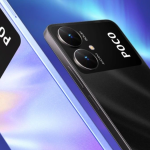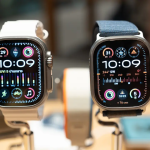Apple’s upcoming iPhone 17 Air is generating buzz ahead of its official unveiling later this year, with a new hands-on video showcasing a sleek black dummy unit that offers a glimpse of what to expect. While the video features a non-functional model based on leaks and rumors, it highlights the phone’s ultra-thin profile and some intriguing design choices that set it apart from other iPhones.
Ultra-Thin Design: The Main Attraction
The dummy unit shown in the video, published by Majin Bu Official, emphasizes just how slim the iPhone 17 Air is expected to be. Achieving this thinness appears to come at the cost of some features, most notably the camera setup. Unlike many modern smartphones that boast multiple rear cameras, the iPhone 17 Air reportedly features a single rear camera. This is a surprising move in today’s market, but Apple may rely on a high-quality sensor combined with its advanced image processing software to deliver good photo quality despite the simpler hardware.
The video also reveals a striking black finish on the dummy unit, which may or may not be an official color option. If Apple does offer this stealthy look, it could appeal to users who prefer a minimalist and elegant aesthetic.
Silicon Carbon Battery: A First for Apple
One of the most exciting rumored features of the iPhone 17 Air is the introduction of a silicon carbon battery—a technology Apple has not used before but which has appeared in some Android devices like the OPPO Find N5 foldable. Silicon carbon batteries are thinner yet denser than traditional lithium-ion batteries, allowing manufacturers to pack more capacity into a slimmer form factor.
This innovation means the iPhone 17 Air could house a battery comparable in size to a 5,000mAh lithium-ion battery but without compromising its slim design or battery life. This advancement could address one of the biggest challenges in ultra-thin smartphones: balancing battery capacity with form factor.
Replacing the Plus Model and Paving the Way for Foldables
The iPhone 17 Air is also expected to replace Apple’s long-standing Plus model in the iPhone lineup. This suggests Apple is shifting its strategy to focus on thinner, lighter devices rather than larger, heavier ones in this segment.
Additionally, the iPhone 17 Air may serve as a testbed for technologies that will appear in Apple’s rumored foldable iPhone, expected to launch in 2026. This aligns with Apple’s broader goal of innovating in form factors and materials while maintaining high performance and user experience.
What to Expect Next
- Launch timeframe: Later in 2025 as part of the iPhone 17 series.
- Design: Ultra-thin body, single rear camera, possible new color options like stealth black.
- Battery: First Apple device with silicon carbon battery technology.
- Role: Replacement for the Plus model and precursor to foldable iPhone tech.
While the hands-on video is based on a dummy unit and should be taken with some caution, it provides a tantalizing preview of Apple’s direction with the iPhone 17 Air. The focus on slimness, innovative battery tech, and streamlined features suggests Apple is targeting users who value portability and design elegance without sacrificing essential performance.
As the official launch approaches, more concrete details will emerge, but the iPhone 17 Air is shaping up to be one of the most interesting iPhones in recent years.






